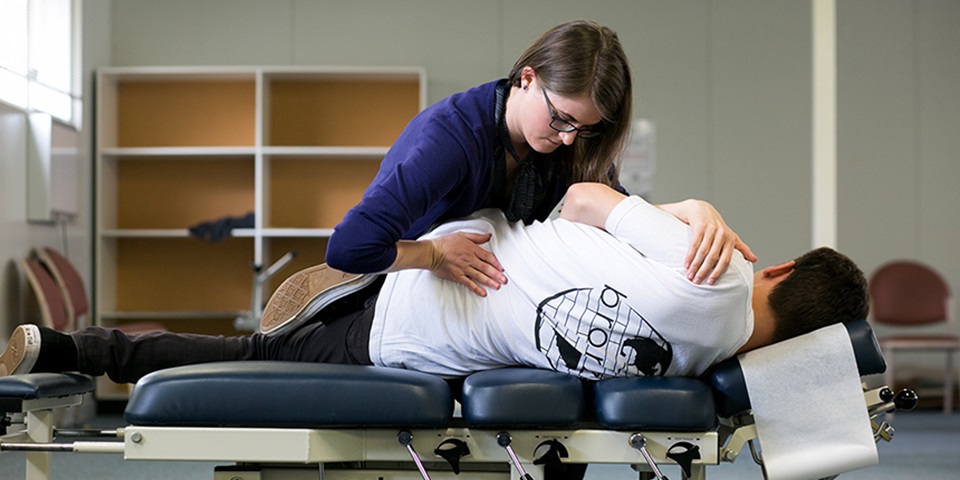Blog
Top 5 chiropractic myths busted

Chiropractic treatment has been proven to help millions of patients around the world suffering from back pain and other chronic conditions. Despite this, myths and scepticism still surround the viability of chiropractic science.
Myth 1: Chiropractors do not undergo proper, certified training
Becoming a chiropractor takes five years of intense university study, which encompasses a double bachelor's degree and more than 1,600 hours of clinical work.
First, aspiring chiropractors must complete a three-year Bachelor of Science degree, introducing them to human biological sciences and preliminary chiropractic units. Next, they’ll progress onto their second degree, a Bachelor of Clinical Chiropractic, which takes two more years. In this degree, students will learn how to recognise the signs and symptoms of various disorders, including joint and muscle abnormalities and related pain syndromes.
Murdoch is proud to offer the only fully accredited chiropractic course in WA. Accredited by the Council on Chiropractic Education Australasia (CCEA), our graduates are eligible for registration in Australia, New Zealand and many other parts of the world.
Myth 2: Chiropractors just crack backs
While chiropractic science is focused on spinal manipulation (also known as adjustment) chiropractors also have an in-depth understanding of how the spine and related structures, including soft tissue, are intrinsically connected to the body's function.
In addition to spinal manipulation or adjustment, chiropractors also treat patients through:
- mobilisation, which is the gentle movement of the joint to increase its range of motion,
- strengthening and conditioning exercises,
- application of therapeutic modalities including heat/ice, electrotherapies, and various taping techniques as required by patients,
- therapeutic stretching and massage,
- activity and lifestyle modification advice, and
- adjustment of other joints around the body, including ankles, shoulders, wrists, elbows.
Myth 3: Chiropractors are only useful for back pain
In addition to treating back and neck pain, chiropractors are also trained to help patients suffering from some types of headache and migraine, whiplash-related injuries, and musculoskeletal pain in the upper and lower limbs.
Chiropractors can also provide services such as postural testing and analysis, and help with nutritional and exercise advice.
Myth 4: There’s no proof chiropractic therapy works
While many people believe there’s no proof chiropractic therapy works, chiropractic treatment actually includes a variety of evidence-based treatments for musculoskeletal pain.
A 2018 review published in The Spine Journal references numerous studies spanning 17 years which involved spinal manipulation and mobilisation. The review found chiropractic methods were viable options for pain management for those suffering from chronic lower back pain.
In a study published by NCBI, 93 per cent of patients suffering from chronic whiplash syndrome improved following chiropractic treatment. Another study published by National Centre for Biotechnology (NCBI) sites preliminary evidence which suggests chiropractic spinal manipulative therapy is beneficial for patients with back-related leg pain.
In great news for those suffering from chronic headaches, a 2010 study published by NCBI concluded spinal manipulation is effective in treating both headaches and migraines.
Myth 5: Chiropractors are not regulated
Practicing chiropractors are vigorously regulated in Australia. The health profession is one of 14 regulated by the government via the Australian Health Practitioner Regulation Agency. Other professions include optometry, psychology, and dentistry.
Just like other medical professionals in Australia, chiropractors are required to register with their own body, the Chiropractic Board of Australia, and are subject to the standards, codes and guidelines established by this board.
Check out our combined degree in Chiropractic Science/Clinical Chiropractic - the only one of its kind in WA.Blog
Top 5 chiropractic myths busted
Series
Posted on
Tuesday 26 March 2019
Topics